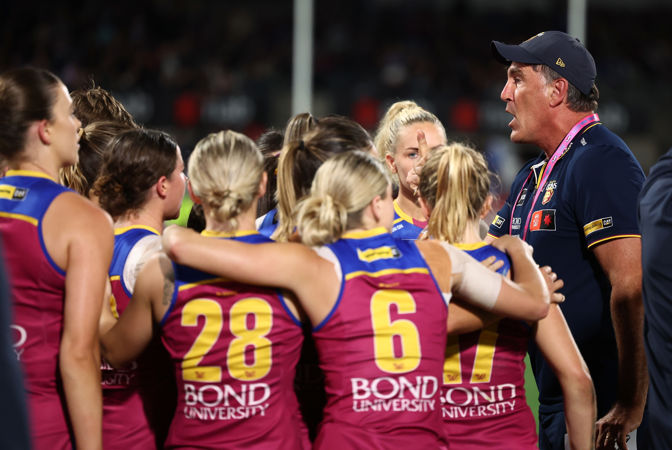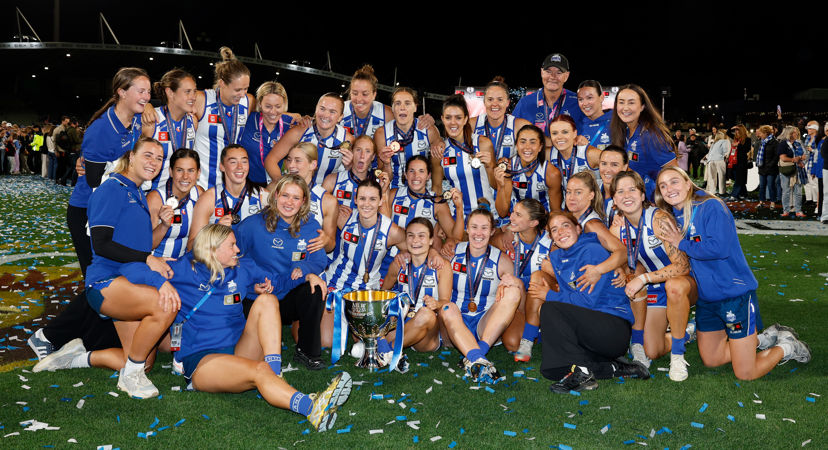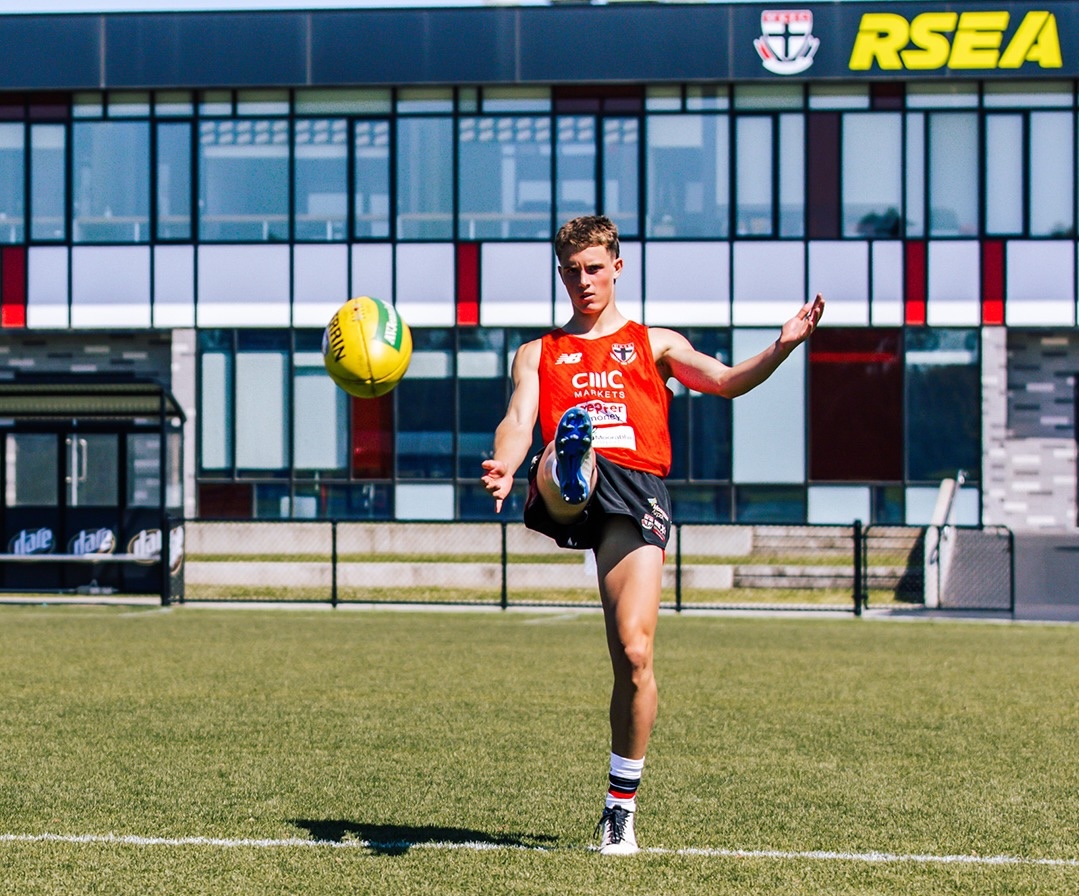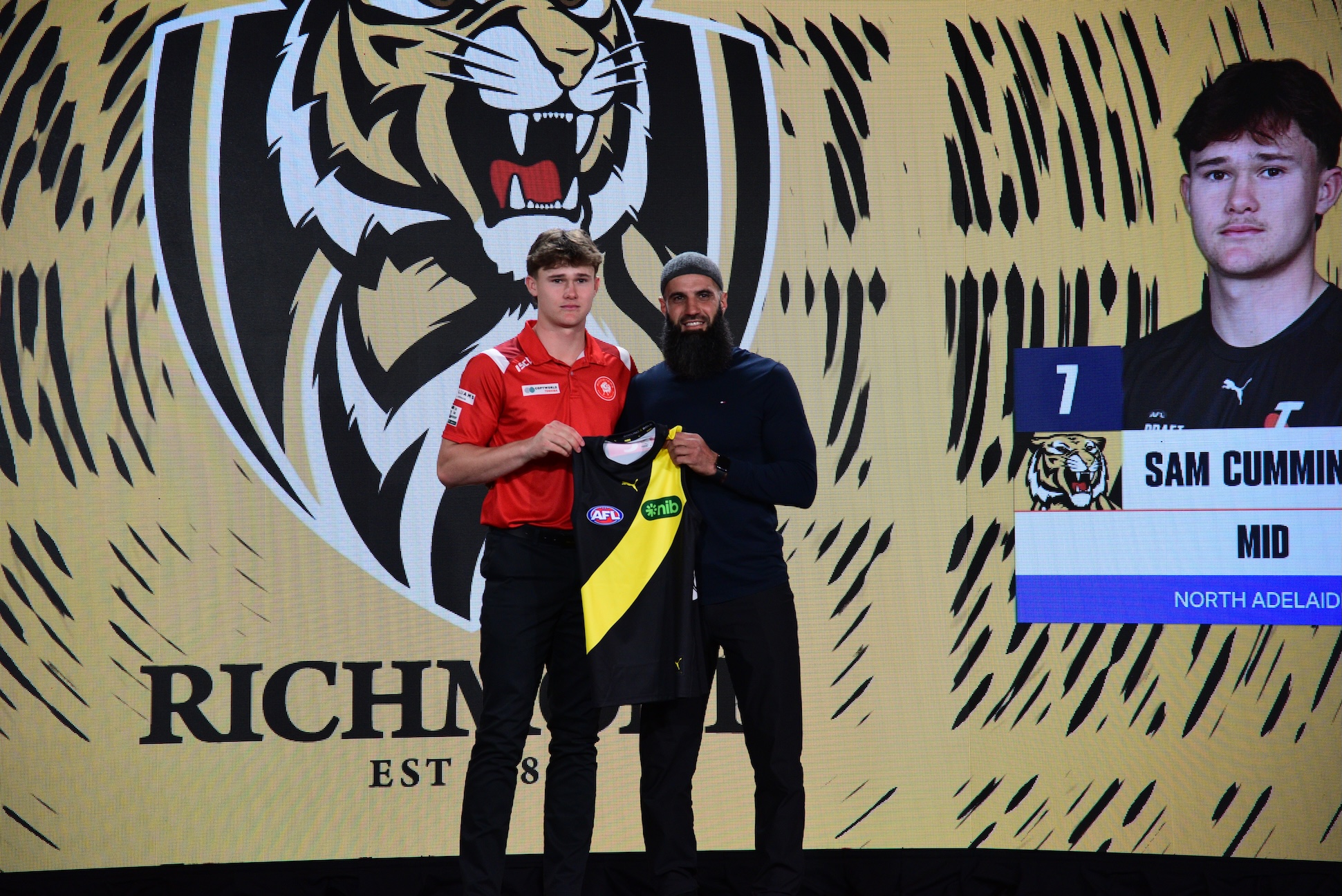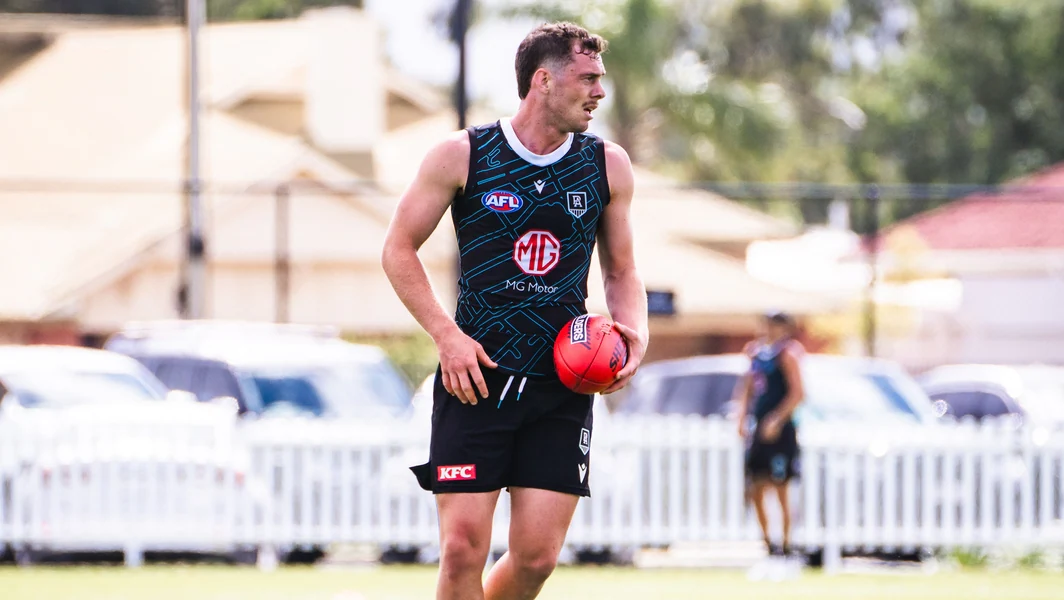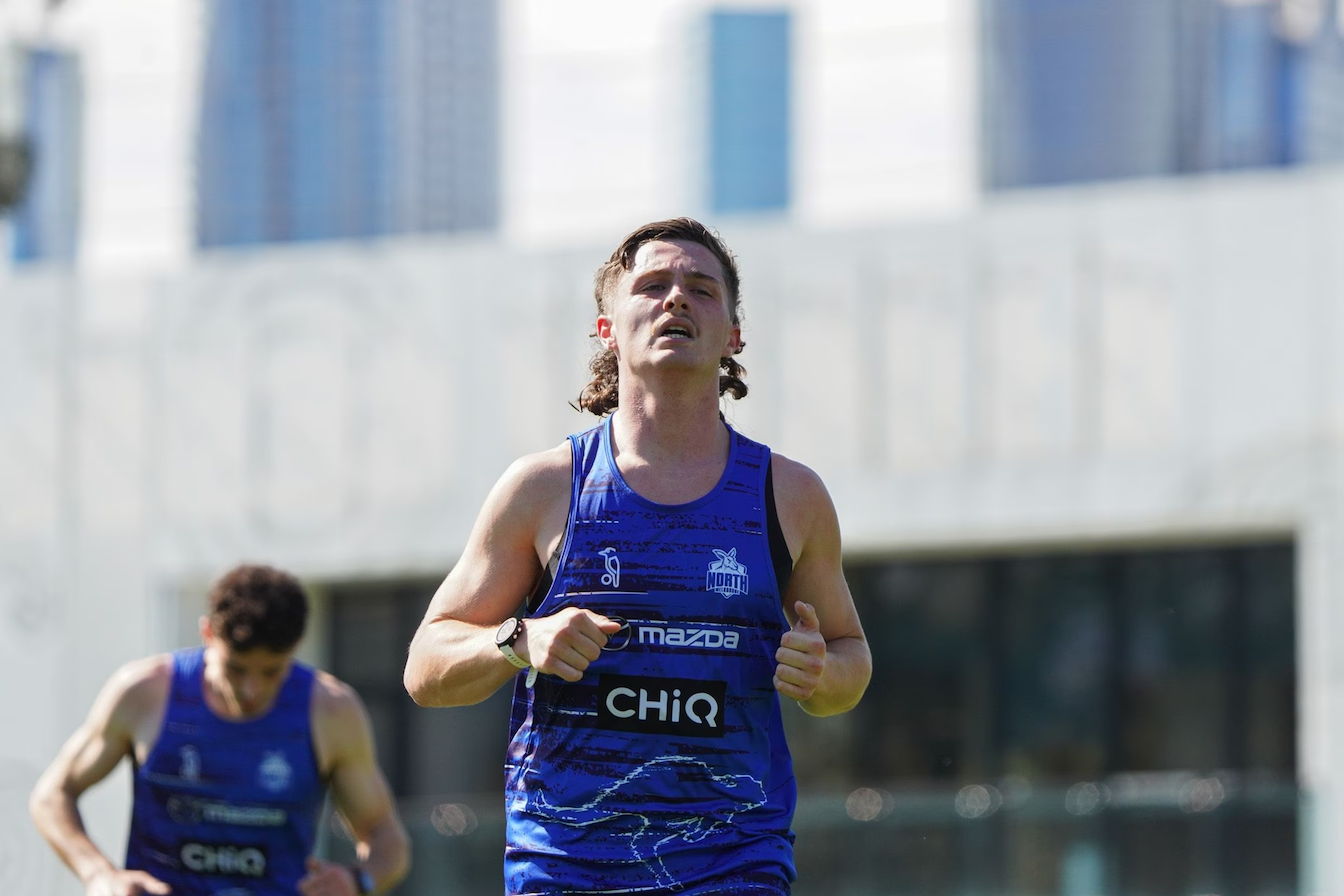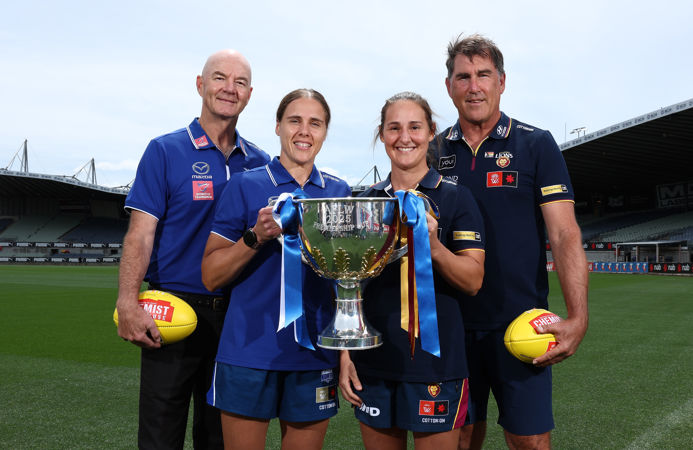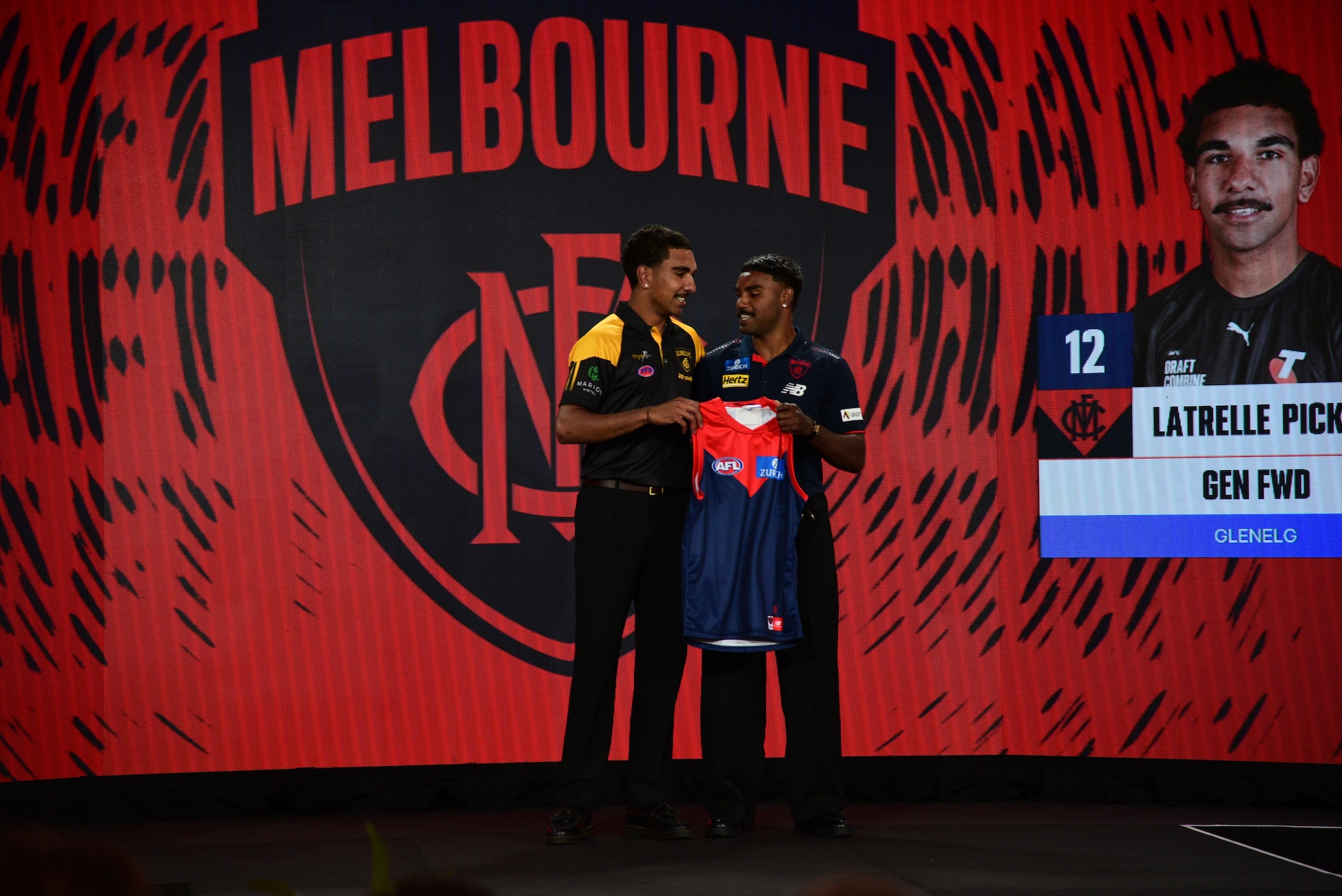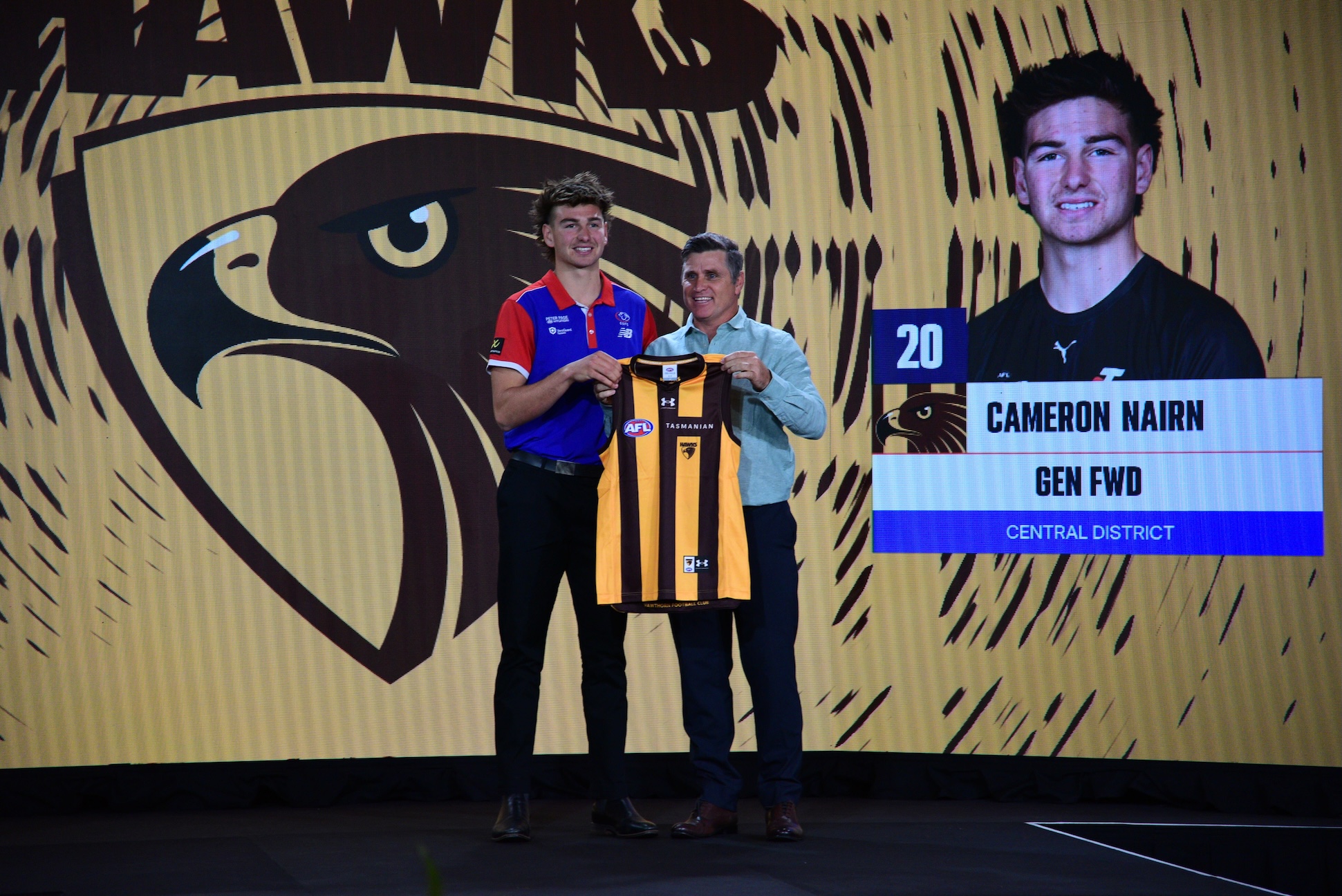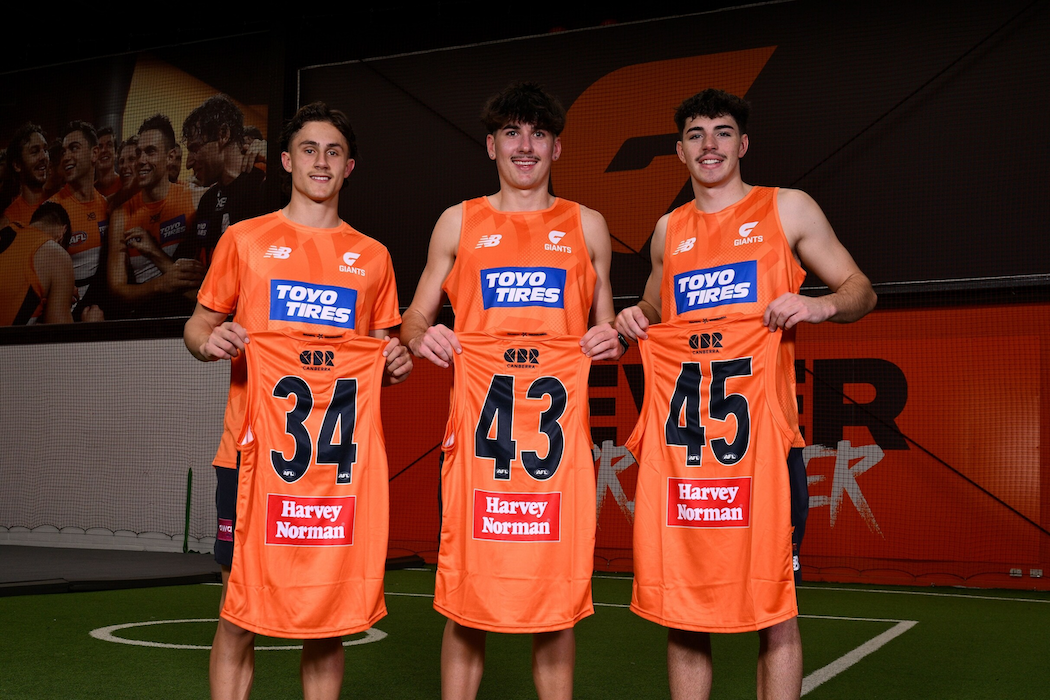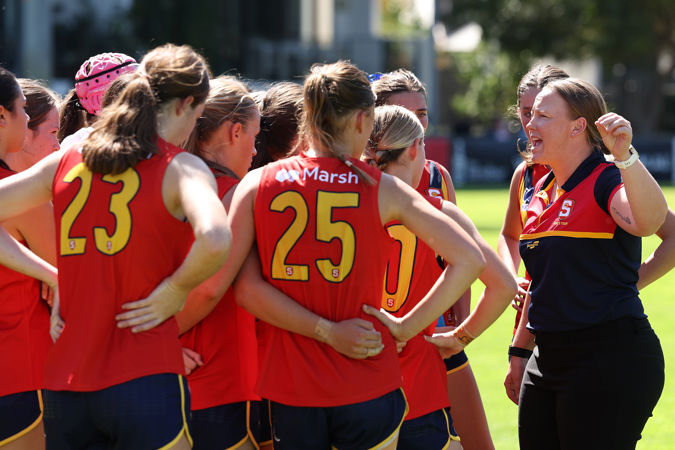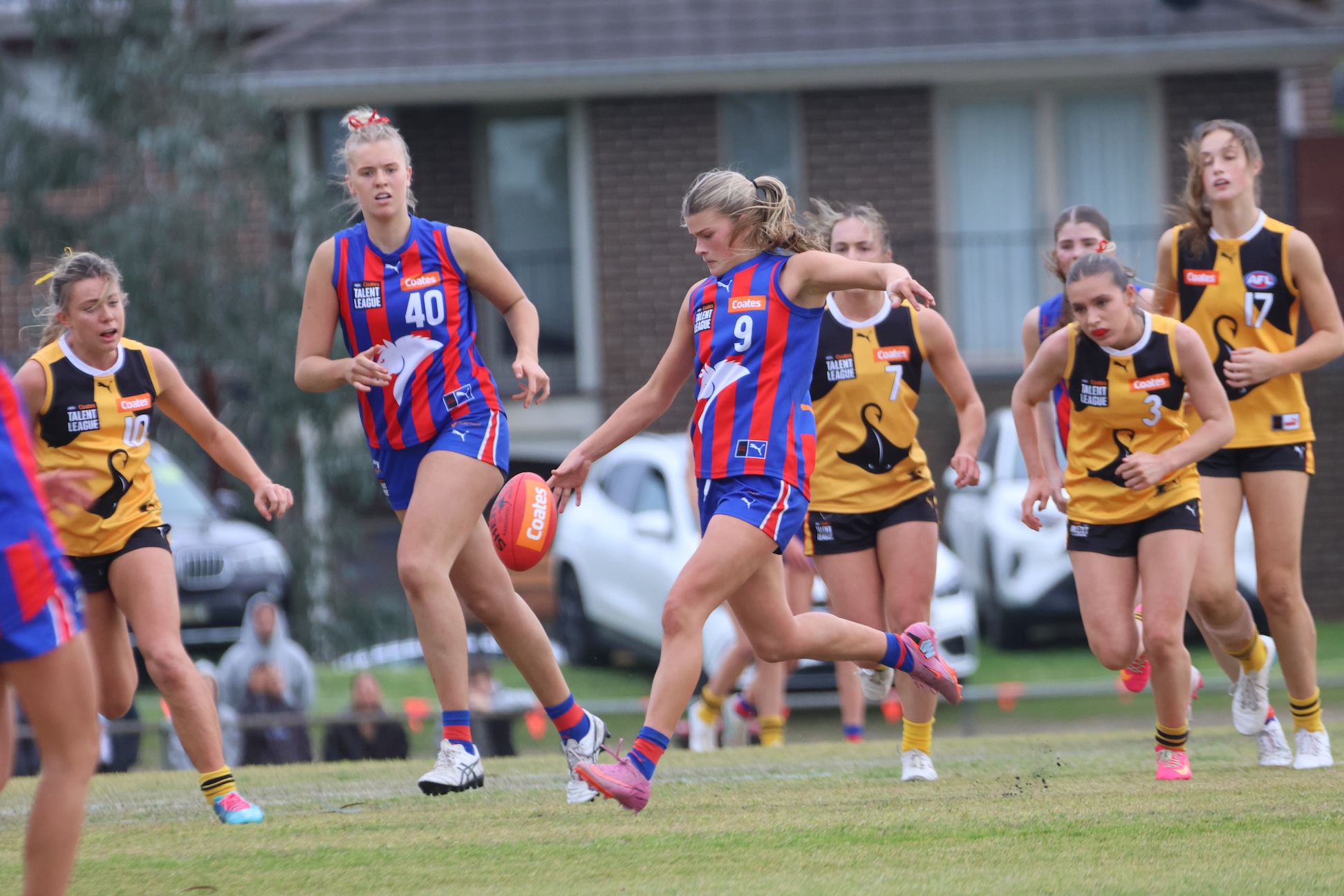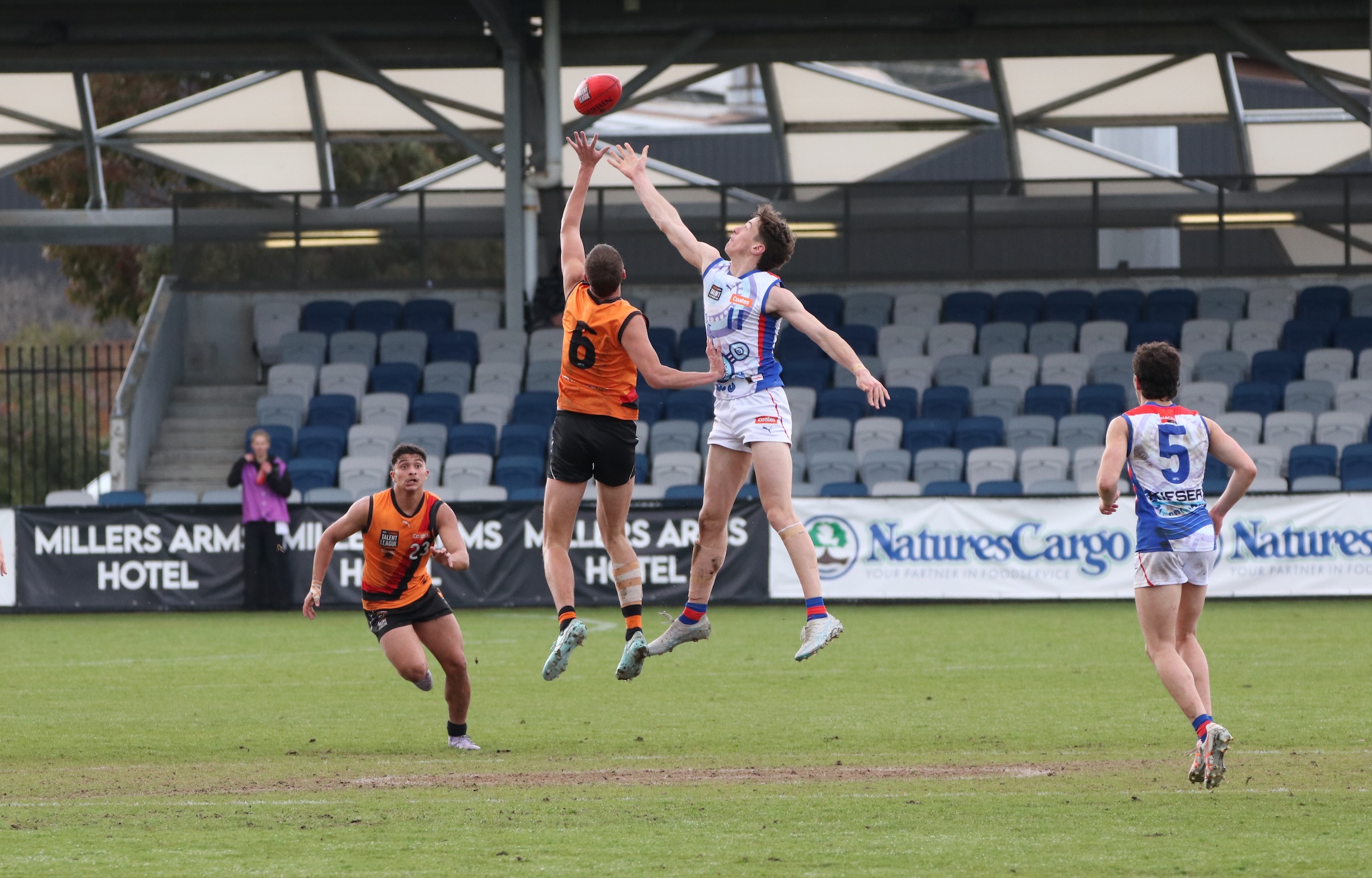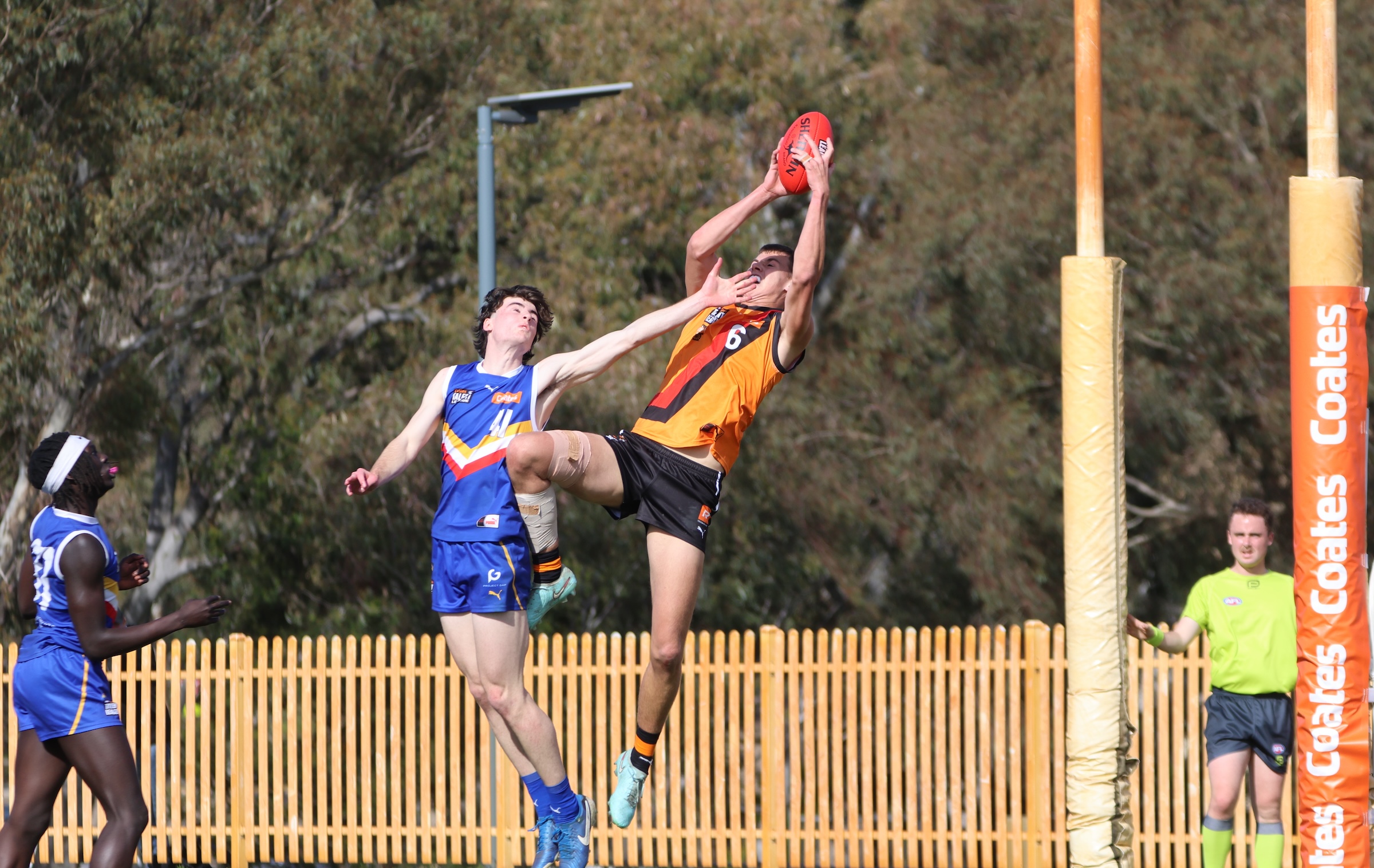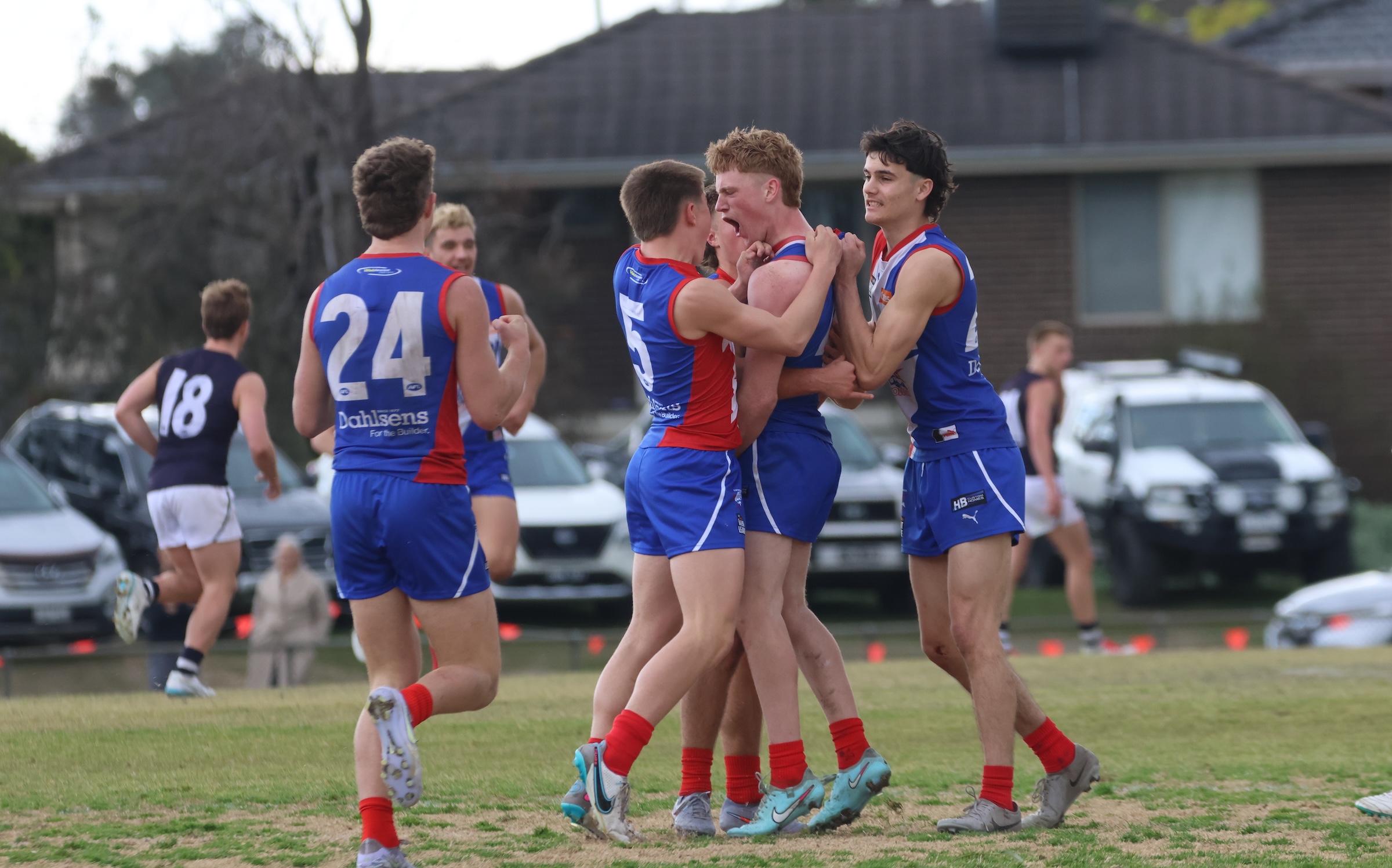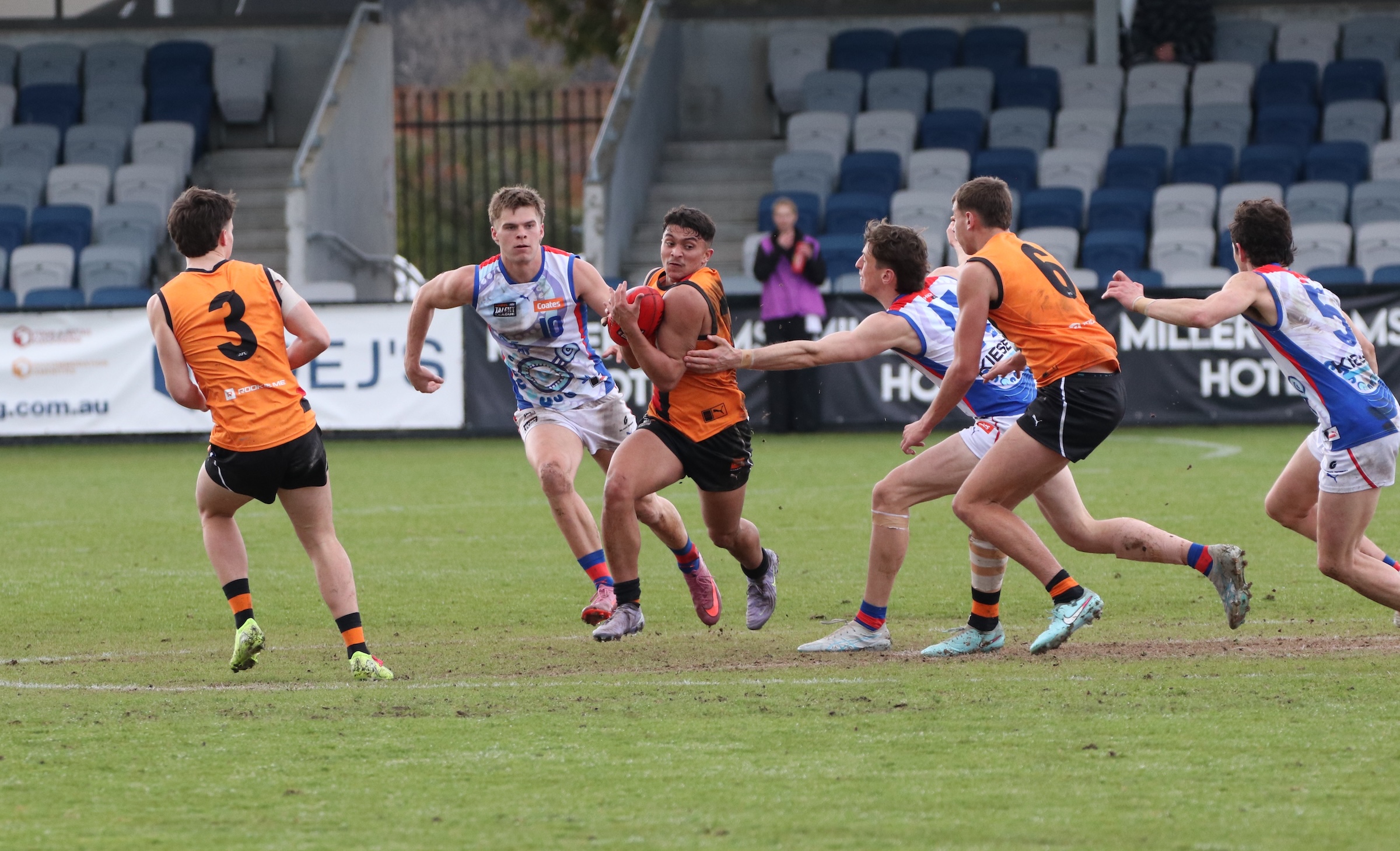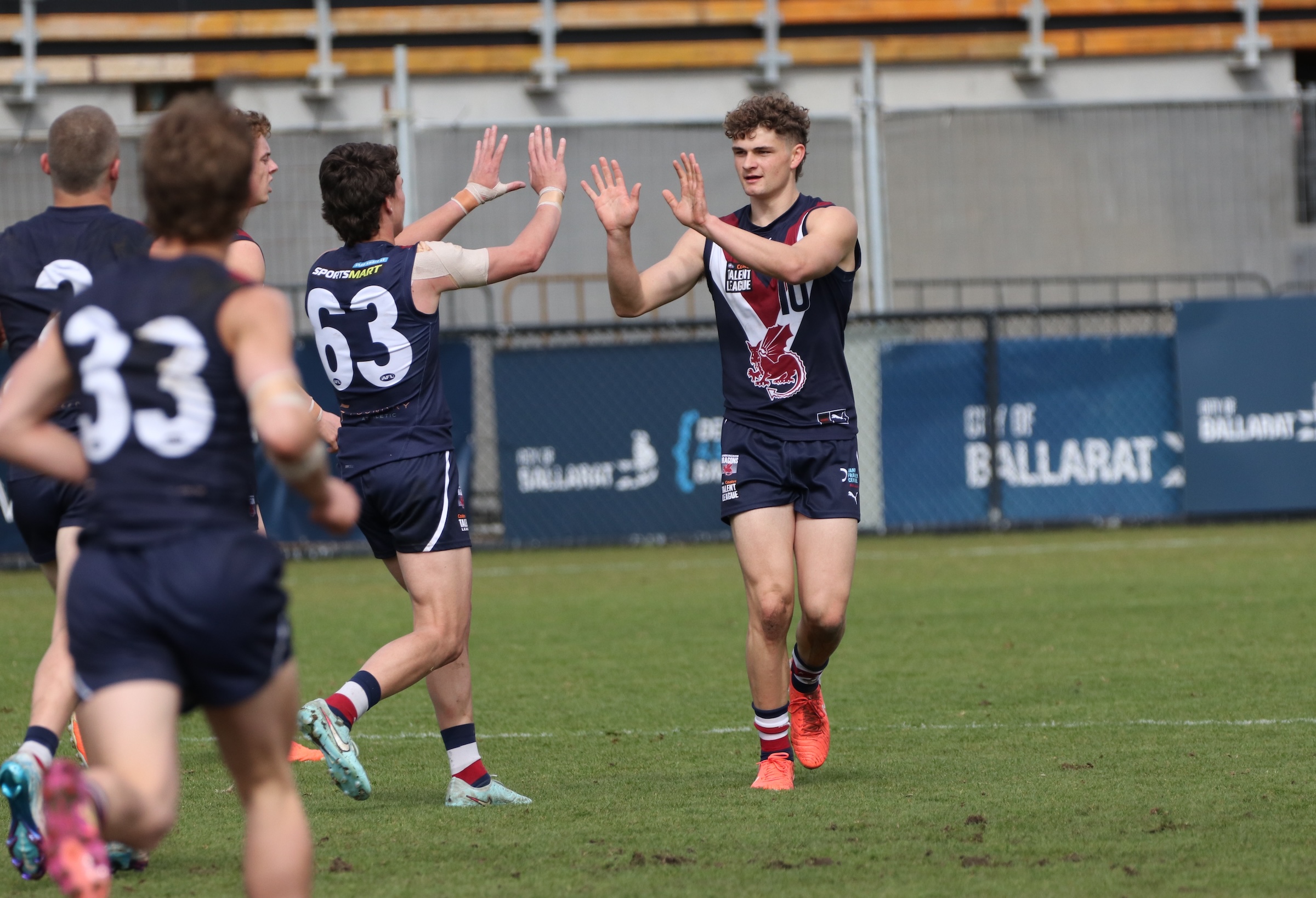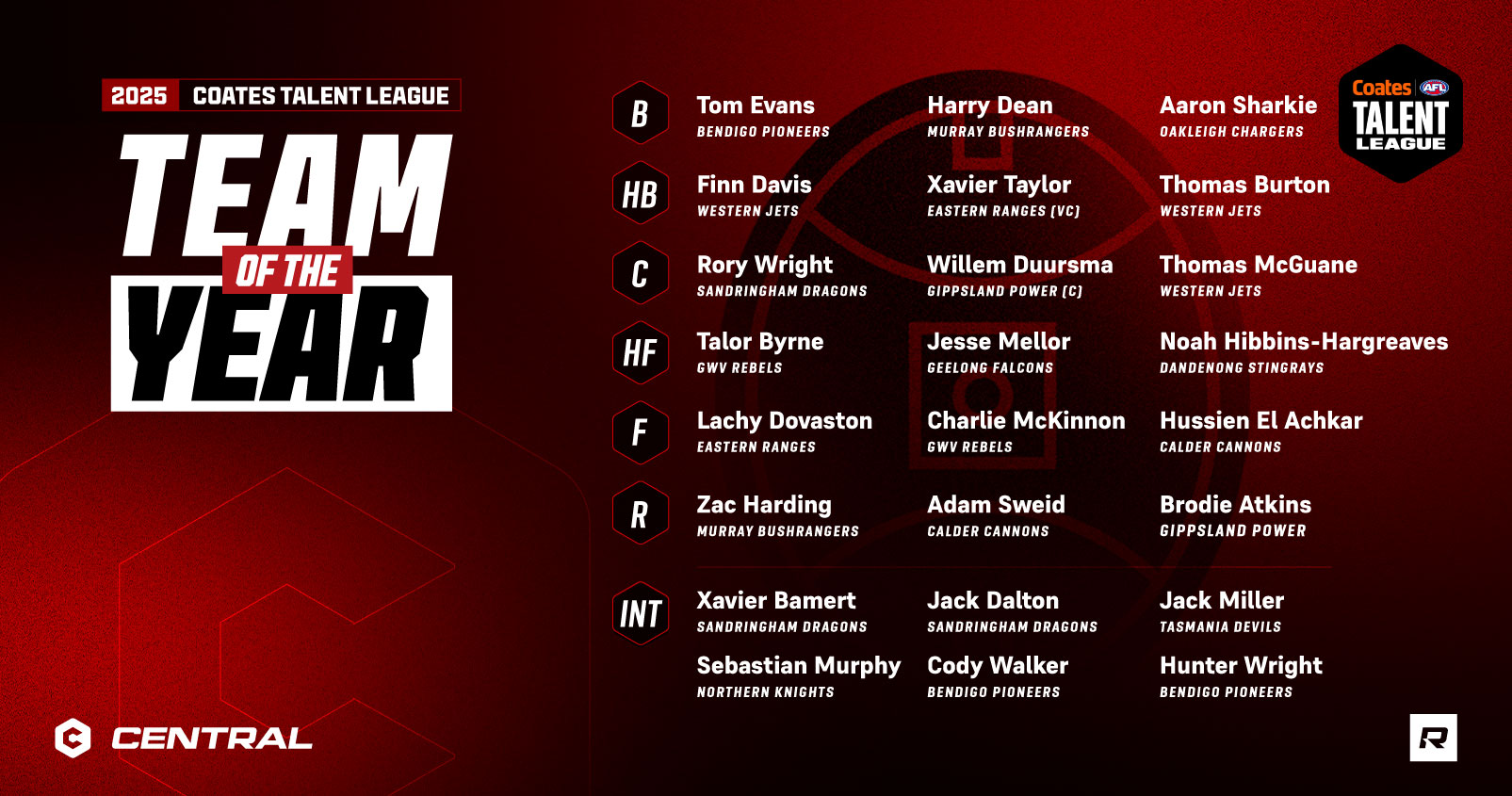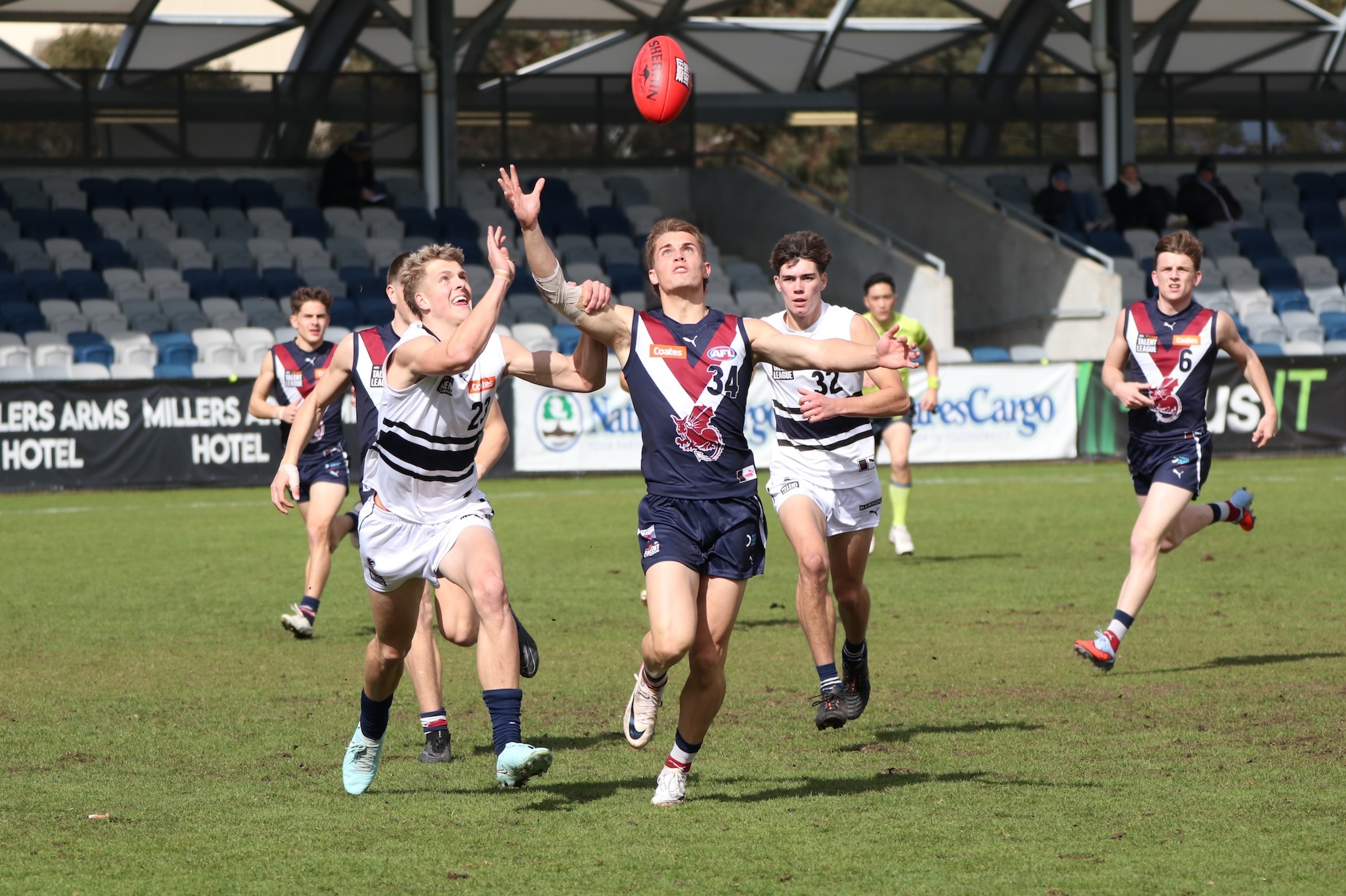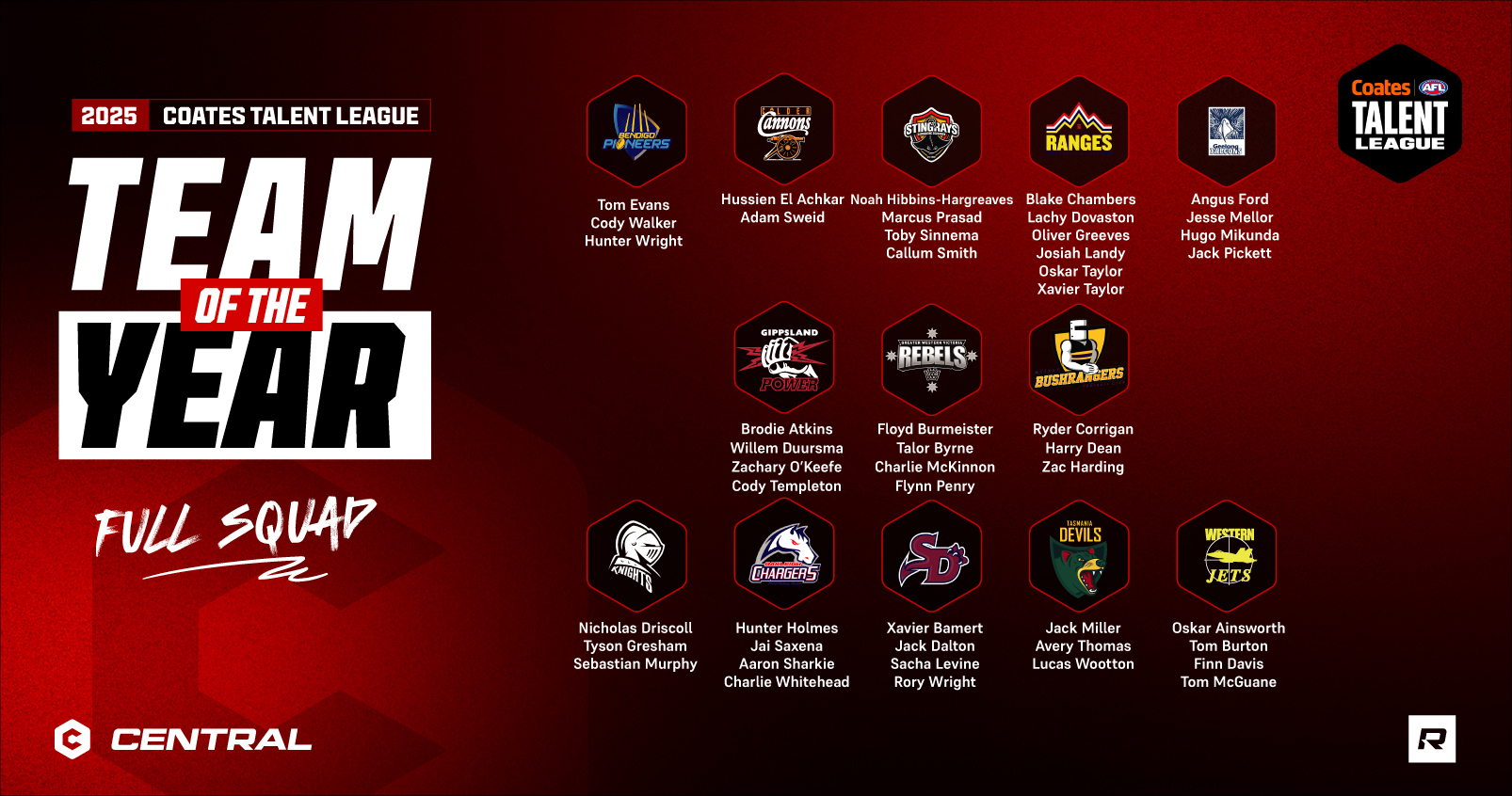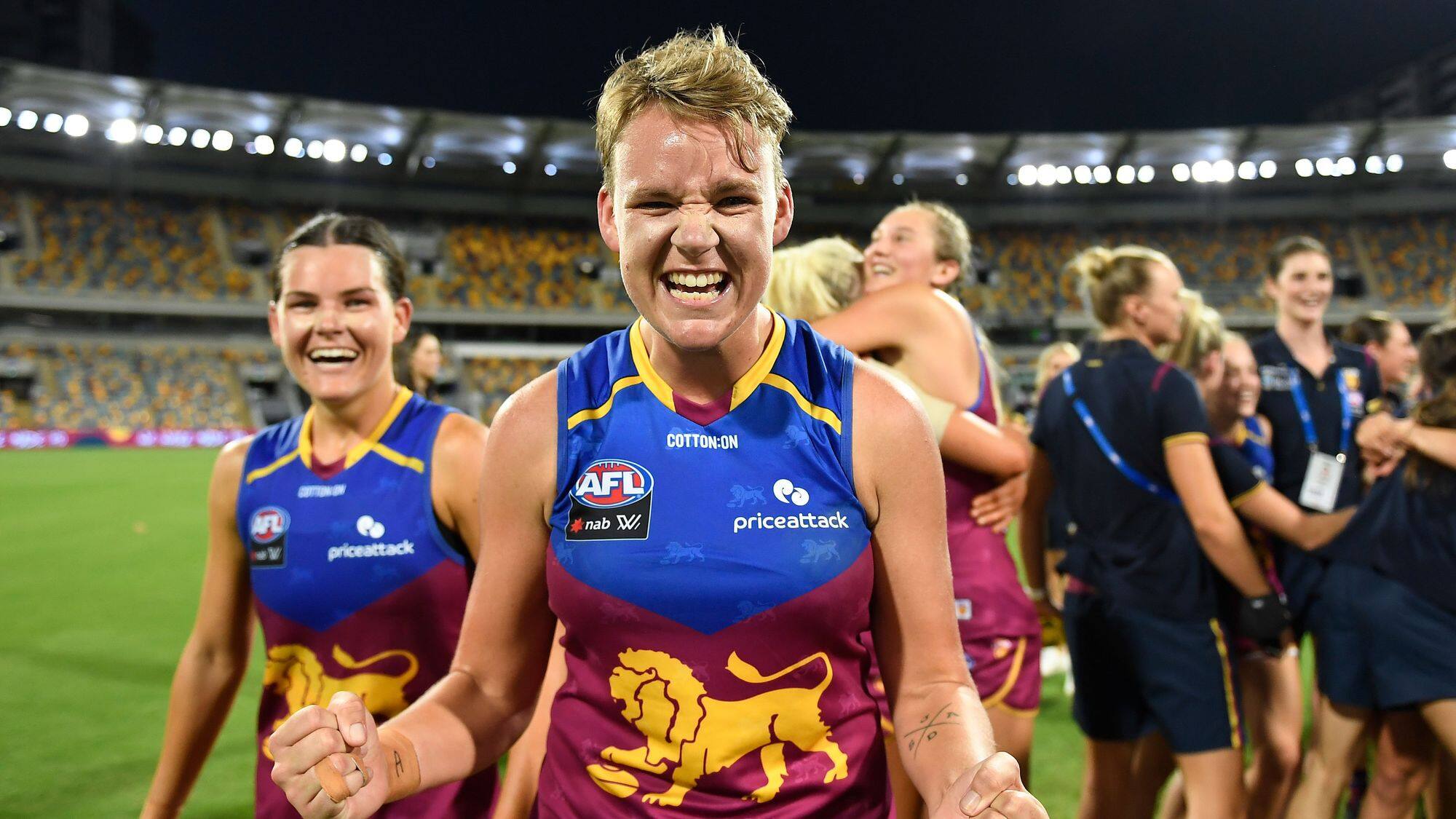The race to be number one: What separates Daicos and Horne?

Nick Daicos Oakleigh Chargers/Vic Metro
DOB: 3/01/2003 Height/Weight: 183cm/72kg Position: Midfielder
Season Averages: 2021 NAB League
4 games | 35.5 disposals | 22.3 kicks | 13.3 handballs | 6.5 marks | 3.8 tackles | 6.0 inside 50s | 2.5 rebound 50s | 2.3 goals (9 total)
Jason Horne South Adelaide/South Australia
DOB: 21/06/2003 Height/Weight: 184cm/78kg Position: Midfielder
Season Averages: SANFL League
8 games | 15.0 disposals | 10.6 kicks | 4.4 handballs | 4.4 marks | 3.9 tackles | 3.4 inside 50s | 0.5 rebound 50s | 0.6 goals (5 total)
MEN AGAINST BOYS
The first place distant draft watchers often look when comparing players is the stats sheet. While it’s a fairly useful performance indicator, in this case it needs much more context than is afforded through pure numbers. Daicos is miles ahead of Horne on that basis alone, averaging 20 more disposals and managing just under double Horne’s goal tally in half the amount of games. He leads the NAB League for total disposals, kicks, and goals, while also topping Oakleigh’s charts in a number of other categories. His numbers are ridiculous, there is no denying it, and Horne’s don’t make for bad viewing either. The difference is the level they’re playing at. Victoria’s elite talent pathway proudly boasts about providing over half of the total draft pool each year, and while that is fact, the standard of the competition has been a touch sub-par in 2021. That is not to discredit Daicos, talent pathway staff, or any of the footballers who have stuck true to their dream throughout a difficult period, but the game of catch-up remains evident after a year away from competitive action and incredibly rushed preseasons. On the other hand, Horne’s 2020 campaign was merely disrupted, as opposed to cancelled. He got a taste of senior football as a bottom-ager and is better for it now, performing consistently in what is arguably the nation’s strongest state league at the moment. The 17-year-old has fallen below 10 touches just once in eight games and has impacted with more permanent midfield time. He also performed brilliantly in the SANFL Under 18s competition for two seasons as an under-ager. Through no real fault of his own, Daicos is yet to get an extended run at senior level. He was due to slot into Collingwood’s VFL set-up during the NAB League’s month-long break, but a lingering corked thigh and overall management of his workload meant that did not come to fruition. The saying goes you can only beat who’s in front of you, and Daicos is doing that, but the different levels these two are competing at is a big factor in what their numbers look like.THE ACADEMY GAME
So these two compete at different levels currently, but what happened when they ran out on the same field this year? The pair was chosen to represent the AFL Academy in a showcase game against Geelong VFL in April, often seen as a good sighter for the year’s talent. The Under 19 Academy was trounced by 130 points, with few prospects truly able to enhance their credentials on what was a tough day at the office. Daicos was the AFL Academy captain and carried the role with aplomb having also experienced leadership with Oakleigh in the NAB League. Horne has too, at representative level no less, but Daicos got the nod here. The second big tick for Collingwood’s father-son hopeful was that he ended the game as the Academy’s clear highest ball winner. Not only that, but his 26 disposals were double that of Horne. Now the context of competition is out of the equation, surely it’s conclusive that Daicos is the better-performed prospect – on pure numbers. It’s not quite that simple, as you’ll find below. >> Scouting Notes: AFL Academy vs. Geelong VFLIMPACT PER POSSESSION
It’s all well and good winning bucketloads of the ball, but what are these two doing with it? Horne’s lower disposal rates in comparison do not necessarily indicate lesser impact. 15 of his disposals are arguably more damaging than if Daicos had the same number, but the latter’s sway on the game comes through sheer accumulation and an uncanny knack for knowing when and where his next possession will come. Horne’s penetrative kick and bullet-like passing can be a real weapon, matched with the positive intent to put the ball in ominous areas. His knack for taking eye-catching overhead marks and laying crunching tackles also point towards his undeniable status as a high-impact player. Daicos is usually a wonderfully clean and clever user of the ball, with the added trait of bringing his teammates into the play. He constantly looks to give and go; kicking short and running hard to get the handball back, or chaining by hand up the field to help bring some fluency to his side’s play. It means he is a productive and creative type in midfield, just in a different way to Horne. He is better able to find the ball in all areas of the ground with his work-rate and smarts, but is that kind of accumulation always as impactful as possible? The verdict is out, but he can certainly have an overwhelming effect on the game with his rate of accumulation, popping up everywhere.CLOSING THOUGHTS
Judging such high-level AFL Draft prospects to the most minute details is often a fickle exercise which does little to actually highlight what they do so well. In this case, it works to better understand some of the key parameters and contexts required to make such judgements. At the end of the year when both likely attract top two selections, and throughout their careers the discussion will rear its head – again and again. Walsh/Rozee, McCluggage/Taranto/McGrath, Hodge/Judd/Ball – all examples of exactly that. It never goes away, but hopefully now there is a better understanding of which factors weight in the favour of both Daicos and Horne, for fans, pundits and recruiters alike to make their own judgement calls. It’s all subjective.